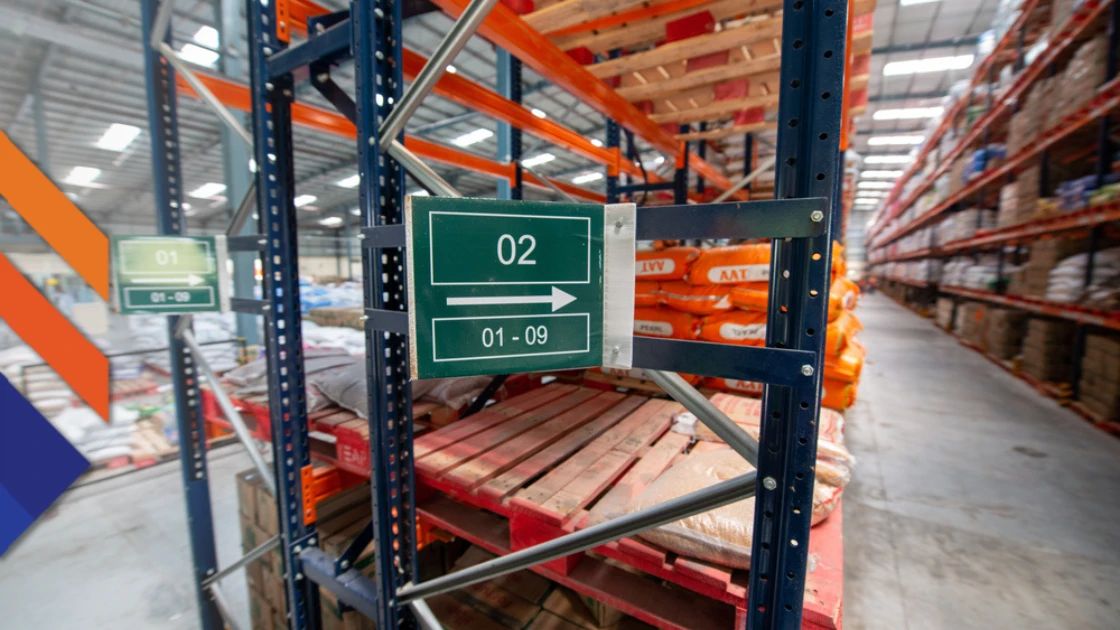Backorders – 5 Ways to Avoid Them
Contents
No matter what name it goes by – backorder, back order, or BO – when they occur, they are frustrating for inventory managers and customers alike.
Backorders open the door for your customers to shop elsewhere with the possibility they may never come back. They also cause extra work for your material handling operation leading to additional costs and delays in shipping.
Nobody’s perfect, so inevitably, backlogs will occur. When you understand the causes and implement measures, you can significantly reduce occurrences of BOs that negatively impact your business and customer experience.
What is a Backorder?
A backorder, or BO for short, is an order for goods or services that are not immediately available due to limited stock, extended delivery times, or production delays. The warehouse must set aside the order until stock is replenished and attempt to fulfil the order again.
When a backorder occurs, customers may receive partial shipments while they wait for the rest of their orders to arrive.
Understanding how to handle backorders is critical for optimising business efficiency and maintaining excellent customer service levels for warehouses and manufacturers. Effective control measures such as implementing a warehouse management system or performing regular cycle counts reduce the number of avoidable backorders.
Why do backorders occur?
While BOs are sometimes out of your control, there are many cases when they are avoidable. It takes getting down to the root cause and implementing a fix to prevent them from happening again.
Poor demand forecasting
There is no such thing as a perfect forecast. Like any plan, forecasts are the best guess at what may happen; therefore, they can and will be wrong. When demand forecasts are inaccurate or lack visibility into future customer orders, the likelihood of insufficient inventory to fulfil all incoming orders increases.
The inability to keep up with demand from customers
Another common cause of BOs is the inability to keep up with increased customer demand. During peak season, businesses may experience a higher volume of backorders due to the failure to keep up with increased customer demand.
Companies may need more resources or to increase their par levels ahead of busier times of the year. In addition, unforeseen circumstances such as natural disasters or pandemics can cause supply chain issues, further exacerbating the problem.
Lack of technology and inventory control

Backorders can also be caused by a lack of technology and processes, like Warehouse Management Systems (WMS), barcode scanners, or cycle counting. Manual processes are more prone to error, thus resulting in more backorders.
Delayed or late deliveries from suppliers
Backorders can also occur due to delays or late deliveries from suppliers. Suppliers may fail to deliver goods on time due to transportation problems, inclement weather conditions, incorrect orders being shipped out by mistake, or suppliers’ inability to meet their service level agreements(SLA).
Suppose these problems persist over time and lead to multiple delivery delays. In that case, it can create backlogs in production and delivery processes that eventually result in customers not receiving their orders on time—resulting in backorder creation for businesses.
Human error during order processing, picking & packing
Backorders can also be caused by human error during order processing, picking & packing processes within a business’s system of operations. For example, mistakes made in receiving and mispicks resulting in incorrect items being sent out instead of what was ordered by customers can all lead to backorders.
Backorder impacts on business
When backorders occur, businesses need to manage another line of fulfilment, backorder fulfilment. Instead of fulfilling one order, there are now multiple orders that have to be processed, organized, and shipped. This deviation from standard processes can be costly and time-consuming.
Businesses may also have to expedite orders from the supplier, which means paying extra for shipping and handling costs. In addition, businesses will need to maintain safe stock levels due to unpredictable demand and supply chains.
The inability to fulfil sales orders results in lost revenue and an angry sales team. Don’t expect the sales team to be dropping off lunch or tickets to a sporting event if backorders cause them to miss quotas.
Backorder impacts on customer experience

Backorders are frustrating for customers because it adds more work to their plate. They may have to cancel the original order, find another source for their item(s), or wait longer than expected for the ordered items to arrive.
The customer experience is more important than ever, and backorders cause customers to lose confidence in the supplier’s ability to deliver items on time and as expected.
Customers may even begin to experience Frequency Illusion—when someone notices something more often after they become aware of it—which could result in further mistrust in the brand or company’s ability to provide quality products when ordered.
Furthermore, retail businesses may see an increase in customer complaints surrounding delayed shipments and items on backorder. This leads to an endless cycle of poor customer service and lousy word-of-mouth advertising.
Tips for preventing backorders
Backorders can quickly lead to lost sales, customer frustration, and negative reviews. As a business owner, it is vital to stay ahead of backorders by anticipating customer demand and planning accordingly.
Taking measures to ensure you never run out of stock is essential for satisfying customers and keeping your business running smoothly.
Here are some tried-and-true tips for minimising backorders in your business.
Warehouse Management System (WMS)

A WMS system is one of the best ways to avoid stock shortages and backorders.
A WMS can help you manage inventory more efficiently, reduce labour costs, and decrease administrative time-wasting tasks related to stock control. Datapel offers features like guided picking and packing, bin locations, inventory control reports, real-time data analysis, and the ability to print labels.
Another critical benefit is leveraging Datapel’s WMS to manage backorder fulfilment. Backorder fulfilment is often a manual process and once that piece of paper is lost… so is the customer.
Implement an Inventory Management System (IMS)
An Inventory Management System system is essential for ensuring accuracy in managing your inventory levels by providing visibility into sold products, how much is in stock, and when to place new orders to avoid running out of items.
The system should also be able to generate purchase orders and provide predictive forecasting capabilities. You will discover many features in an IMS in Datapel’s WMS, giving you complete visibility over product movement and inventory control.
Leverage technology to improve inventory accuracy
Technology plays an essential role in keeping track of your inventory levels. Barcode scanners, handheld devices, or wearables can help you quickly scan items coming into the warehouse and going out – so you always have an accurate record of what’s available.
By having this information readily available, it becomes easier for you to identify when certain products are running low so that new orders can be placed before a potential backorder situation arises. They also help to reduce errors often associated with manual processes.
Establish solid processes and procedures for order fulfilment
Having clear policies and procedures for order fulfilment in place can help prevent backorders from occurring in the first place. For example, implementing a reliable shipping process with strict deadlines helps ensure that goods are sent out on time.
Additionally, designing automated processes such as integrating Point of Sale (POS) systems or setting up inventory alerts.
Perform regular inventory control measures
Performing regular inventory checks is vital if you want to avoid BOs. It is important to count how much of each item you have in stock regularly. This will help ensure you don’t run out of something later because the records say you have more than you actually do.
Cycle counting utilizing ABC analysis provides timely and accurate data for procurement teams which helps them replenish inventory to avoid backorders and overstocking.
Say no to backorders
Backorders can have severe consequences for businesses if not prevented.
Fortunately, there are ways to mitigate the risks associated with them, such as WMS systems, barcode scanners, cycle counting, etc. These tools give you insight into your inventory levels so that accurate decisions about restocking or ordering more items can be made in time.
It is also essential to establish solid processes and procedures related to order fulfilment which should help prevent backorders from occurring in the first place. With Datapel’s WMS system, you will find all these features and much more! Get a free trial today.
FAQ’s
What does backordered mean?
A backorder, often abbreviated as BO, refers to an order for goods or services that cannot be fulfilled immediately due to factors like limited stock, extended delivery times, or production delays. The items are reserved or “backordered” until they become available, and the order is then fulfilled.
What is allow backorders?
Allowing backorders means permitting customers to place orders for items that are currently out of stock or unavailable. This option enables businesses to capture sales even when inventory is low, with the understanding that customers will receive their orders once the items are restocked.
How long does backorder take?
The duration of a backorder can vary depending on factors such as supplier lead times, production schedules, and shipping logistics. It typically involves waiting until the required items are restocked or become available, which can range from days to weeks or longer, depending on the specific circumstances.
Will I still get my order if it’s backordered?
Yes, customers will still receive their orders even if they are placed on backorder. Backordered items are reserved for fulfilment once they become available again, ensuring that customers eventually receive the requested items, albeit with a delay.
What are the disadvantages of backorders?
Disadvantages of backorders include potential loss of sales due to customer dissatisfaction or shopping elsewhere, additional costs and delays for businesses in managing backorder fulfilment, and negative impacts on customer experience and brand reputation.
What is a backorder cost?
Backorder costs refer to the expenses incurred by businesses in managing and fulfilling backordered items. These costs may include expedited shipping fees, additional labour for processing backorders, potential loss of sales revenue, and impacts on overall operational efficiency.
Can you cancel a backordered item?
Depending on the policies of the business and the stage of the backorder process, it may be possible to cancel a backordered item. Customers should contact the seller or customer service representative to inquire about cancellation options and any associated terms or fees.

In my role, I oversee the development of insightful blogs that delve into the intricacies of warehouse management. Each piece reflects my dedication to empowering businesses through informative content. Through my team’s extensive experience in the industry, we aim to bring clarity to the complexities of WMS, helping businesses make informed decisions.
Join me on a journey through the ever-evolving landscape of warehouse technology as we explore the latest trends, industry insights, and practical tips to streamline your operations. Feel free to connect, and let’s embark on a collaborative exploration of how WMS can redefine your business efficiency.
Cheers to innovation, efficiency, and the exciting world of warehouse management!







